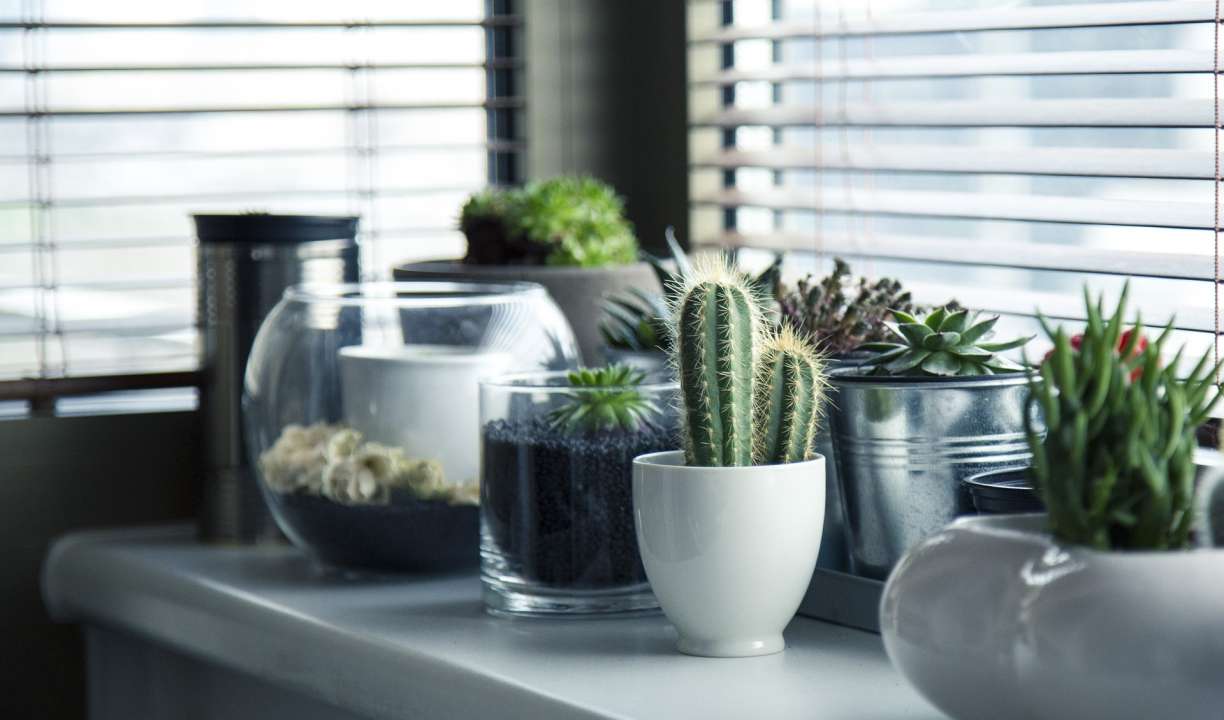Indoor plants
For centuries it has been acknowledged that plants are beneficial for our physical and mental well-being, and more recent studies have quantified why plants are so important in our modern environment.
Read on or click here to shop our indoor plants

Today’s homes, schools, hospitals and offices buildings tend to be well sealed, insulated and heated and this has been found to result in poor indoor air quality. Sick Building Syndrome – where symptoms including eye, nose and throat irritation, headaches, fatigue and irritability, chest tightness and wheezing, skin dryness and/or irritation are reported – is now understood to relate air quality. Furnishings, detergents, wall coverings and paints can all give off Volatile Organic Compounds (VOCs) – a large group of substances including toluene, xylene, benzene etc. which can result in these symptoms.
NASA has a particular interest in air quality in sealed environments such as space stations, and their studies have found that houseplants are very effective at removing pollutants and improving air quality. Their findings were supported by scientists from the University of Copenhagen who carried out a wide-ranging review of over 100 studies into the impact of houseplants on air quality.
Although we feature a selection online, why not visit us at Merryhatton where you can choose from the hundreds of houseplants in all shapes and sizes.
To help you get started, we've highlighted some of our most popular indoor plants below.

Spathiphyllum (Peace Lily)
This beautiful plant can improve your indoor air quality by as much as 60%. It reduces the levels of mould spores and can absorb harmful household vapours including benzene, ammonia and acetone. In bathrooms, the Peace Lily helps keep shower tiles and curtains free from mildew.
To get the best from your Peace Lily:
- They naturally live in warm, moist, slightly shaded rainforests, so provide warm, even temperatures and mist regularly
- Remove dead flowers and foliage to keep the plant healthy
- Water regularly, but do not overwater and feed with a houseplant food

Anthurium (Flamingo plant)
Research by NASA has shown that Anthuriums are very effective at removing air-borne pollutants including formaldehyde, ammonia, toluene and xylene. With large, dark green leaves and stunning flowers that can last for months, they’re a lovely addition to the home or office.
To get the best from your Anthurium:
- Consider their natural habitat where they live in warm, moist, slightly shaded rainforests and provide warm, even temperatures. Mist regularly to improve humidity
- Water regularly, allowing the compost to dry out in between but do not overwater

Chlorophytum (Spider plant)
The ever-popular Spider plant can remove up to 90% of the toxins in your indoor air in just two days! The leaves help absorb harmful substances like mould and other allergens so its the perfect plant for those with common dust allergies.
To get the best from your Chlorophytum:
-
Provide indirect light, but avoid direct sunlight which can scorch
-
Chlorophytum is very tolerant of temperatures, providing they are above 50C
-
Water & mist regularly. If the tips of the leaves turn brown, increase the misting - the tips are drying out too quickly
-
Feed with a general purpose houseplant fertiliser

Ficus benjamina (Weeping Fig)
A native of Asia and Australia, the weeping fig can reach 30m in its natural habitat. Particularly good at absorbing Xylene, Toluene and Formaldehyde which are found in furniture and common household products. Different leaf colours including variegated varieties.
To get the best from your Weeping Fig:
- Tolerant of direct and indirect sunlight, but sensitive to draughts and abrupt changes in light levels
- Keep in warm, even temperatures and clean the foliage from time to time to allow good light absorption
- Water regularly and mist.
- Feed with a general houseplant food

Aloe vera
Known by the Egyptians as the “plant of immortality”, the gel of this succulent has been recognised for its healing properties for more than 6000 years. Research continues today into its efficacious applications.
Effective in removing benzene – an air-borne pollutant that is found in detergents and plastics. Also known to remove formaldehyde which is found in varnishes and floor finishes.

Sansevieria trifasciata (Mother-in-law's tongue)
All Sansevieria are incredibly tough and for those who believe that they can’t keep plants, this is definitely the plant that should change their thinking! There are 3 main forms of Sanseveria; the S. trifasciata (tall, stiff and upright), so-called Bird’s Nest forms (dense, low-growing compact rosettes of leaves) and S. cylindrica (tall, smooth cylindrical leaves with a sharp point).
Native to west Africa, the Sansevaria is a very efficient air-purifier, removing 4 out of 5 of the main indoor airborne toxins. It absorbs carbon dioxide and releases oxygen overnight and so is particularly recommended for the bedroom.

Hedera helix (Ivy)
The ivy has been shown to reduce the amount of unsavoury air-borne particles, and is efficient in removing formaldehyde; a component in many household cleaning products. It’s therefore an ideal plant for bathrooms and toilets which have natural light.
